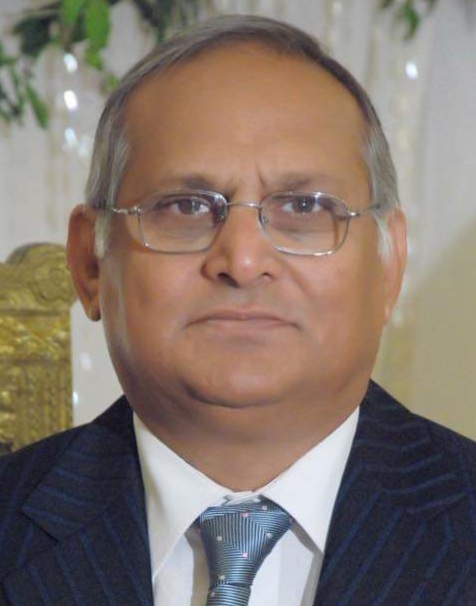By . Ghulam Haider Shaikh
In a country often haunted by political volatility, institutional deadlocks, and environmental negligence, it is refreshing to see a government take ownership of a long-overdue ecological and urban development initiative. The Punjab government’s revitalization of the Ravi River is not just an infrastructure project—it is a message of commitment to sustainability, intergenerational responsibility, and visionary governance.
The Ravi River, once a lifeline of Lahore and surrounding areas, had over the decades deteriorated into a polluted, seasonal stream. Encroachments, industrial waste, untreated sewage, and unchecked urban sprawl had turned what was once a historic waterway into an environmental tragedy. Countless reports, studies, and blueprints had pointed toward the urgent need for restoration—but little had been implemented on the ground.
That reality has finally begun to change.
The current Punjab administration deserves commendation for translating dormant concepts into concrete actions. Under their stewardship, the Ravi Riverfront Urban Development Project (RRUDP) has taken its first real, measurable steps toward restoring the ecological and cultural heritage of the region. Rather than shelving an inherited plan—as often happens in our political tradition—the government has chosen to act, invest, and build with continuity and conviction. This alone signals a welcome shift toward policy maturity.
Perhaps the most inspiring element of this initiative is its multidimensional impact. The project is not merely about restoring a river; it is about transforming urban planning, fighting climate change, ensuring water security, creating green employment, and building a resilient future for generations to come.
International cooperation is one of the most remarkable achievements in this regard. Turkey’s active engagement, offering technical guidance in sustainable river management, urban planning, and flood control, underscores the project’s credibility and the government’s effective diplomatic channels. Turkey, with its proven success in reviving urban rivers and implementing large-scale water management systems, is a strategic and natural partner in this effort.
Moreover, the participation of Coca-Cola Pakistan through corporate social responsibility (CSR) funding marks a progressive step toward involving the private sector in public interest projects. In an era where multinational corporations are increasingly being held accountable for their environmental footprints, this partnership reflects a mutual commitment to regeneration and responsible development. It also demonstrates that the Punjab government understands the importance of leveraging public-private collaboration to solve long-standing problems.
On the ground, the project is showing tangible progress. River training works—essential to channel and control the flow of water—are underway. This will help reduce flood risks, protect agricultural lands, and enable consistent water management. Massive afforestation campaigns have been initiated over nearly 1000 acres, promising one of Pakistan’s largest urban forests. This step is crucial, especially for Lahore, a city often ranked among the most polluted in the world. Such green zones are expected to improve air quality, promote biodiversity, and offer recreational spaces for citizens.
Another noteworthy component is the rehabilitation of the historic Old Ravi Bridge. Rather than demolishing aging infrastructure, the government has chosen to preserve and modernize it, combining heritage conservation with functionality. This approach reflects a deeper understanding of urban identity and continuity.
Transparency and regulatory diligence have also improved. The Ravi Urban Development Authority (RUDA), now functioning with clearer goals and greater oversight, has adopted a more inclusive and consultative model. Environmental impact assessments, land-use policies, and stakeholder engagements are being conducted more rigorously. The focus is on sustainability, not just development for the sake of construction.
What distinguishes this initiative most is the political will behind it. Environmental restoration in Pakistan has historically suffered from a lack of continuity, insufficient funding, and limited public awareness. But the current government’s unflinching resolve to see this project through—even amid economic challenges and political distractions—reflects visionary leadership. It sets a much-needed precedent: that environmental regeneration should be a non-negotiable national priority, not a political bargaining chip.
Yes, challenges remain. Land acquisition, resettlement issues, and financing gaps must be handled with care and transparency. But the direction is clear, and the steps taken so far are encouraging. Governance, after all, is not about solving everything overnight; it is about making sincere, strategic moves in the right direction—and ensuring that progress outpaces stagnation.
Critics who downplay the project as mere urban beautification miss the larger picture. This is not about vanity; it is about survival. Pakistan is among the top 10 countries most vulnerable to climate change. The water table in Punjab is declining, weather patterns are shifting, and urban heat islands are expanding. In such a scenario, reviving the Ravi is not a luxury—it is an ecological necessity.
The government’s message is clear: we cannot afford to let our rivers die, our cities choke, and our generations suffer. The Ravi River Revival Project, therefore, stands as a flagship of sustainable development, an emblem of responsible governance, and a blueprint for future environmental strategies across the country.
In a system often criticized for short-term thinking, this long-term vision must be celebrated. By investing in green infrastructure, promoting international cooperation, involving responsible corporate partners, and pushing forward with technical and ecological precision, the Punjab government has raised the bar.
Let this serve as a reminder that even in times of economic strain and political uncertainty, there is room for leadership rooted in values, science, and service. The revival of Ravi is not just the revival of a river—it is the revival of hope, responsibility, and statecraft.

